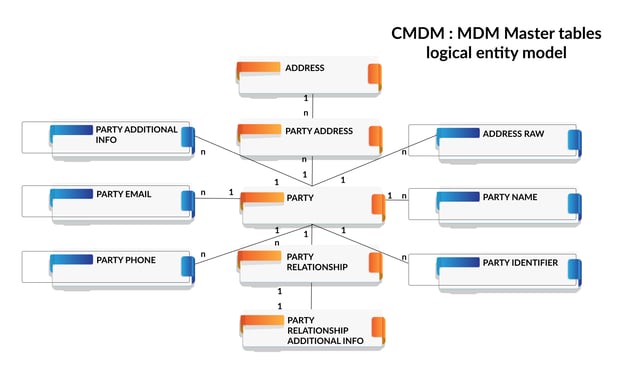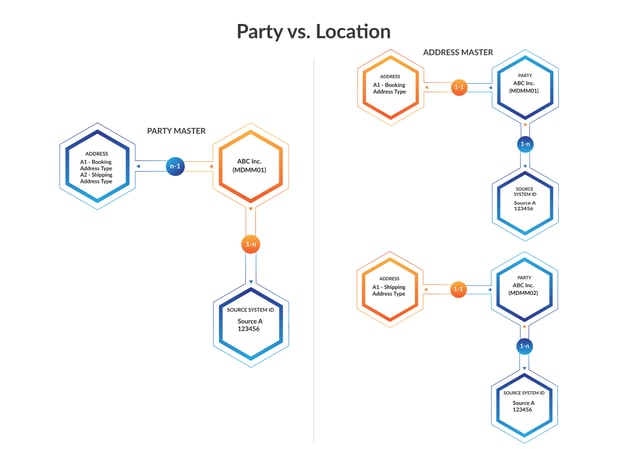Table of Content
TABLE OF CONTENTS

Informatica MDM involves creating a single master record for each person, place, or thing in a business from internal and external data sources and applications. This information is de-duplicated, reconciled, and enriched to form a consistent and reliable source. Once created, this master data serves as a trusted view of business-critical data that can be managed and shared across the business to promote accurate reporting, reduce data errors, remove redundancy, and help organizations/workers make better-informed business decisions.

MDM solutions comprise a broad range of data cleansing, transformation, and MDM integration practices. As data sources are added, MDM initiates processes to identify, collect, transform, and repair data. Once the data meets the quality thresholds, schemas and taxonomies are created to help maintain a high-quality master reference. MDM assures the leaders that the data throughout the enterprise is accurate, up-to-date, and consistent to make intelligent business decisions.
MDM domains to manage information
Master data is classified into categories called domains. Common MDM domains include:
- Customer Master Data Management—both business-to-business (B2B) and business-to-consumer (B2C)
- Product Master Data Management
- Supplier Master Data Management
- Reference Master Data Management
- Location Master Data Management
- Asset Master Data Management
- Employee Master Data Management
Case study
We helped uplift revenue by 5.5% for an Insurance Solution Provider with Informatica MDM Customer-360
Learn more Case Study
You can also master more specific elements like account, patient, provider, beneficiary, contract, claims, projects, movie, character, airports, aircraft, vehicles, sites, and more. It all depends on how you want to align your data with the business challenges.
Having multiple sources of information is a widespread problem, especially in large organizations, and the associated costs can be very high. Because data changes over time, it’s easy for it to get out of sync and become fragmented, incomplete, inaccurate, and inconsistent. As it degrades, people who use it don’t find it trustworthy anymore. This can have disastrous effects - imagine a sales call if the account manager accesses customer information that is incomplete or inaccurate.
Is the location the right one, or has the customer’s address changed?
How confident is the account manager in knowing which products the customer owns and uses?
Are there any open service items?
The wrong answer to any of these questions could put a new sale or existing relationships at risk. MDM ensures that a trusted customer profile is created to eliminate such issues in a company’s data.
MDM addresses the challenges of disparate applications that create, capture, and access data across multiple systems, applications, and channels. These include SAP, Marketo, Salesforce, DemandBase, web portals, CRM systems, shipping systems, invoicing systems, contract systems, and more. With a trusted source of reliable, current data, organizations can get a better view of their products and suppliers, drive customer engagement, and offer a consistent experience to employees and customers.
A use case of MDM-driven business transformation
One of our clients had multiple addresses in different systems:
-
Different address types like Primary Address, Booking or Billing Address, Shipping Address, Delivery Address, Install Address, etc.
-
Multiple addresses per record for one customer system
-
One address per record for one sales system
-
One address each per record for one shipping, installation, and maintenance systems
When we implemented the MDM C360 for this client, one discussion point was: do we set up the MDM dimension as a traditional Customer dimension or a Location dimension?
An example is shown below:
Data from the source system:

Customer dimension approach:
"MDM Creates One MDM record" with multiple Addresses for a given Source Key.
In MDM Add/Update:

ABC Inc. from Source A has two different source system keys with three separate addresses. It also has the same address as Source B with another source system key.
After the MDM match and merge, all 3 MDM IDs get merged into MDM04. A1 will be updated to Booking Address since only one Address of a particular Address Type must be allowed to be active at any point in time. This is also related to the ranking of the source systems when defining the merge and survivorship rules. In this case, Source A would be on a higher ranking than Source B and is the most trusted system.

Location dimension approach:
One Address per record, which means ONE address of ONE address type, and ONE party must have only ONE physical address (location) across address types.
In MDM Add/Update:

For source system key Source A-123456, MDM creates two MDM IDs with two Addresses - A1 and A2, same as Source A-234567 with two addresses - A1 and A3. A1 address is with three different MDM IDs in MDM.
The logical data model of the location dimension approach will look like this since the Address also is a Master address in location-driven MDM:

And the illustration of Party master vs. Address master:

Benefits of Location Dimension Approach:
-
Have one MDM record with a unique MDM ID for each individual Address
-
Though this approach is a Location dimension from MDM’s terminology standpoint, this is the definition of “Customer” for the client
-
After the match and merge, there still must be One Address value of One Address Type, and ONE party must have only ONE physical Address (location) across types
-
The data is processed in MDM, and MDM creates a single address master record (a “golden record” or “best version of the truth”) for each location that contains only ONE party with ONE physical address (location)
MDM can help facilitate a comprehensive business transformation. It gets down to a single source of “golden record” for the customer data, the data associated with locations where the client does business, and the shared reference data that the entire organization uses.
Tags
Data-as-an-Asset

Joanny Yip
Consulting Business Analyst
Joanny Yip, a seasoned Business Consultant with 20+ years of experience across diverse industries, excels in business analysis, testing, and MDM solutions, particularly in customer and item data. Joanny's strengths are user-centric problem-solving, effective communication, and cross-functional collaboration.
-2.jpg?width=240&height=83&name=Menu-Banner%20(5)-2.jpg)
.jpg?width=240&height=83&name=Menu-Banner%20(8).jpg)

